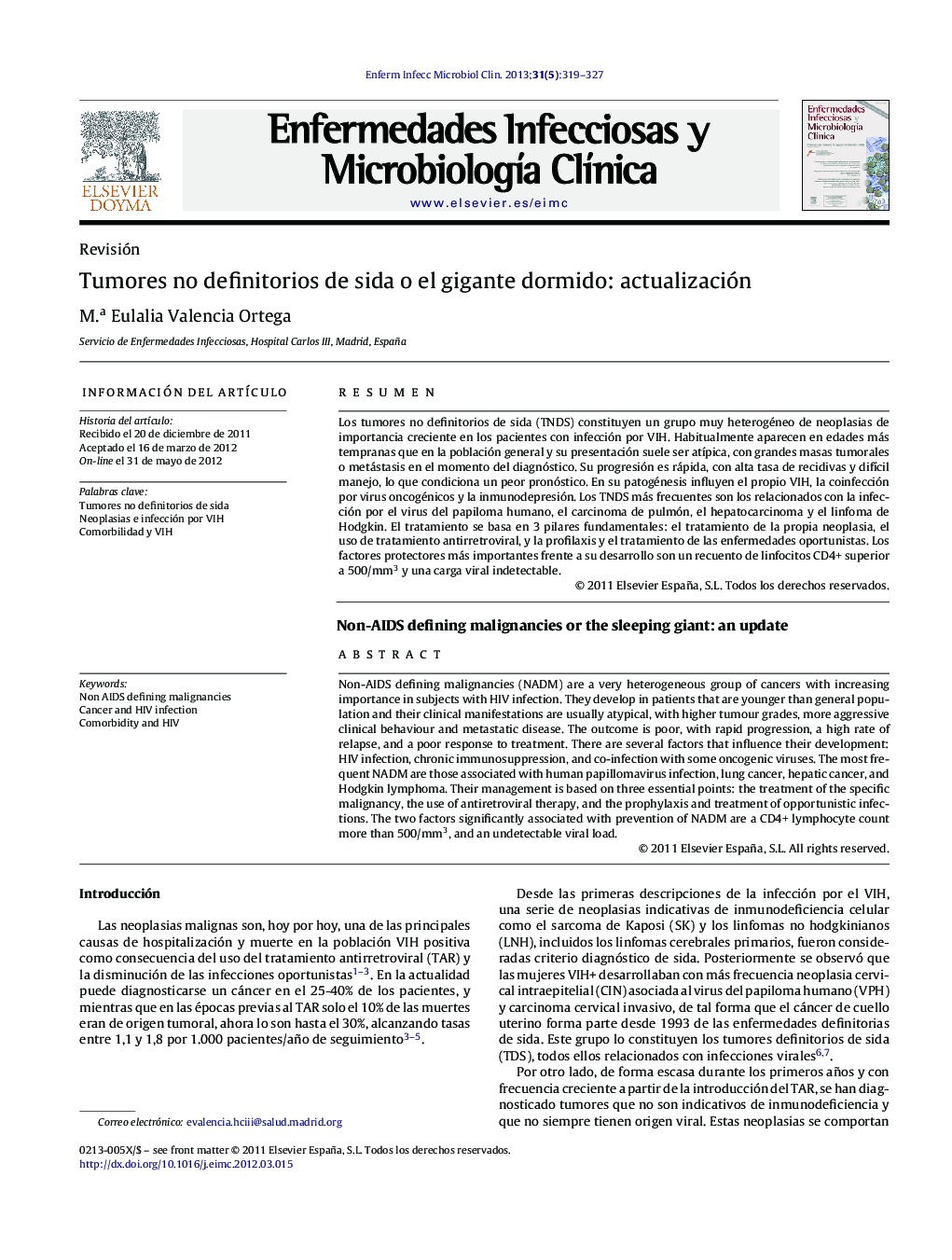| Article ID | Journal | Published Year | Pages | File Type |
|---|---|---|---|---|
| 3401242 | Enfermedades Infecciosas y Microbiología Clínica | 2013 | 9 Pages |
Abstract
Non-AIDS defining malignancies (NADM) are a very heterogeneous group of cancers with increasing importance in subjects with HIV infection. They develop in patients that are younger than general population and their clinical manifestations are usually atypical, with higher tumour grades, more aggressive clinical behaviour and metastatic disease. The outcome is poor, with rapid progression, a high rate of relapse, and a poor response to treatment. There are several factors that influence their development: HIV infection, chronic immunosuppression, and co-infection with some oncogenic viruses. The most frequent NADM are those associated with human papillomavirus infection, lung cancer, hepatic cancer, and Hodgkin lymphoma. Their management is based on three essential points: the treatment of the specific malignancy, the use of antiretroviral therapy, and the prophylaxis and treatment of opportunistic infections. The two factors significantly associated with prevention of NADM are a CD4+ lymphocyte count more than 500/mm3, and an undetectable viral load.
Related Topics
Life Sciences
Immunology and Microbiology
Microbiology
Authors
M.a Eulalia Valencia Ortega,
